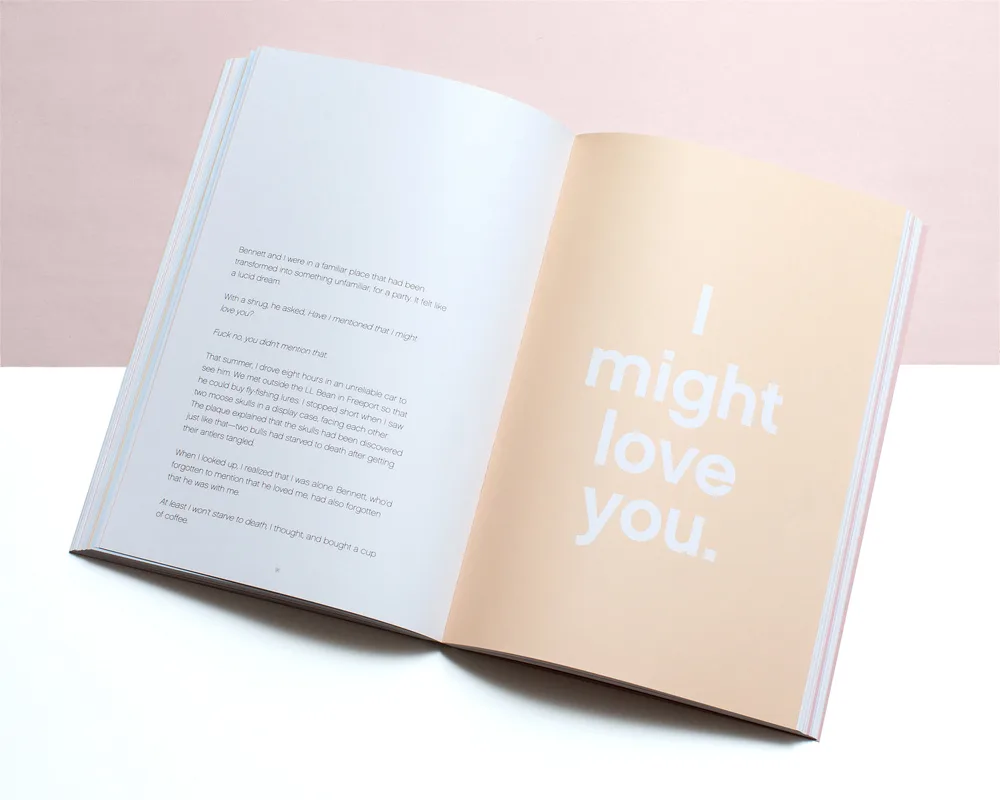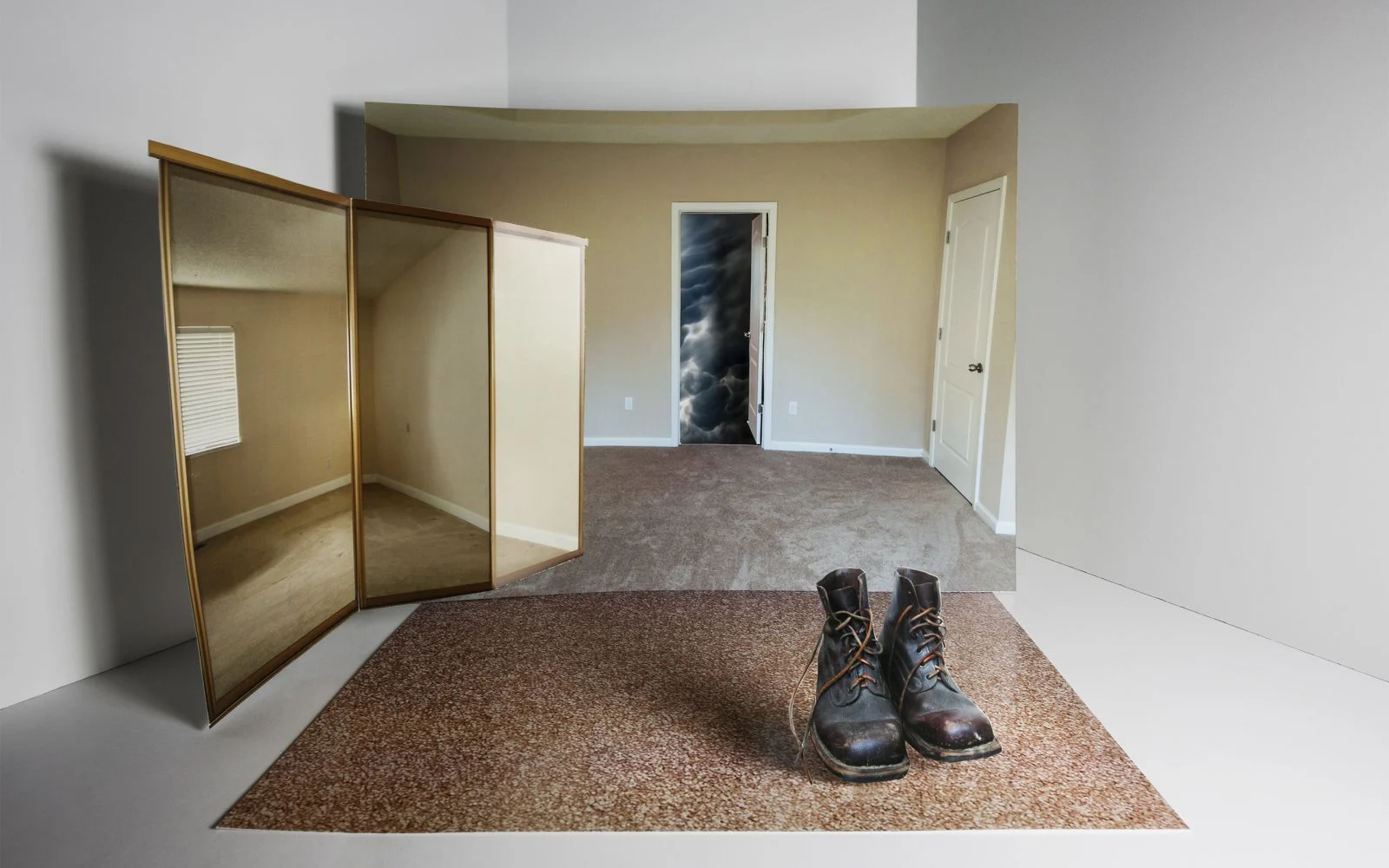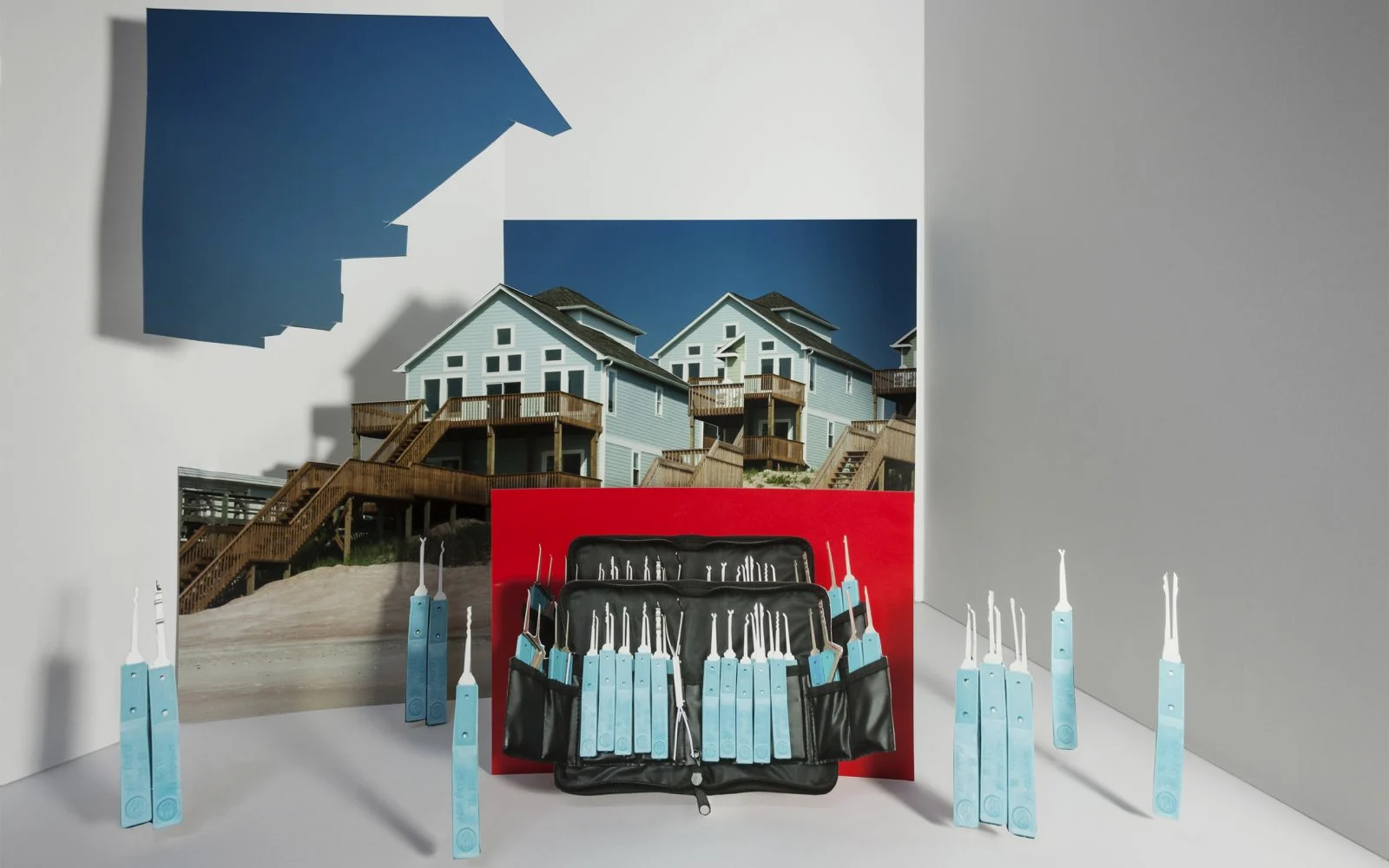

“It’s really good. I’m super pissed.” That’s how an ex-boyfriend of one of the creators of How We End, the brilliant book from writer and artist Kate Stone. It chronicles 41 short love stories, but don’t expect to find romance and rose petals in there.
Instead, Hannah has wittily captured the exact moment a relationship ends, told through the eyes of someone she calls, “an unreliable narrator.” Kate then visualized these texts as intimate scenes set in a bedroom, a kitchen or a porch covered with plants. This interesting combination means that every page tells an intriguing, albeit one-sided, break-up story of what was, and what could have been.

How did you start collaborating?
Hannah: We actually met in college when we were 18. Kate was a photography major and I was a writing major.
Kate had been told by a grad school professor she should make more personal art, and I was told I made overly personal art. So we started this call and response project where I would write a story and send it to her and she would create this visual response to it.
You say everything you write is very personal – does that mean what I’m reading is true and actually happened to you?
Hannah: They’re all based on true stories. But I think I have to say it’s all fiction. They’re based on real relationships, but we’re very conscious of the fact that break-up stories you tell, even just to your friends in a bar, are always very one-sided.
I’ve spoken to some of the people the stories are about, and they would argue maybe they’re not completely accurate. Or maybe parts of them are accurate and other parts they don’t even remember happening.
Most love stories are either about being in love or the heartbreak after, but not often about that specific moment you know you are going to break up. Why did you decide to write about that in particular?
Hannah: I think it started because there were a couple of relationships I found myself really confused about. The first one we ever did was the story Bennett. I think that relationship I was the most perplexed by. I found myself going back and back and back and thinking, “What actually happened?”
I may or may not have quoted his wedding vows.
And with some stories it’s very obvious, like, we grew apart or he cheated or I moved away. That’s a simple answer. For other ones it’s hard to know what was the point of no return. So I was obsessing over these things. We were both in our mid-20s and getting to a point where we wanted to put some of those relationships to bed and move on in a healthier way.
Even if they’re not completely true, I felt like giving myself an answer asto what happened, and say, this is the story. I found it very cathartic.

What about you Kate – you received a story from Hannah, and what happened then?
Kate: This was a fun side project when I needed a break from academia.Hannah would send me a story and I would pick out objects or elements jumping out as being important or symbolic and then I would just Google them. I didn’t have time to go out and photograph every element I wanted to use.
The more we worked on it, the more it became less practical and more conceptual. It fits with the project. I never knew what I was going to end up with, so I might have a very specific idea at the start, but in the end it would be something completely different.
I much prefer to stare into Kate’s art than into my dark heart.
If I tell you my break-up story and I mention a green couch, you are going to picture your own. No matter what, there’s always going to be this disconnect, so we thought it would be interesting to use public imagery to create visual, personal, intimate stories.

You write about your own break-up – you’ve got a lot of feelings about them at first – and then Kate goes and makes this image. Have you ever felt that disconnect Kate describes?
Hannah: Yes, completely. But then it is usually nicer than the real story. I much prefer to stare into Kate’s art than into my dark heart. I’m just kidding. There is a strong disconnect. For example, one story has an orange chair tipped on its side. The chair Kate chose is a much lovelier chair than the gross one the guy had. I’d rather think of it this way.
A lot of this project was about reframing stories with negative connotations and picking out the parts of them we can look back on and think fondly of. So Kate is making this gorgeous imagery which I then can associate with the people who maybe I did’t have gorgeous memories of. But at least something good came out of it.
It was the time we were dating and being picky and dumping guys over having a parrot for a pet.
Kate: Now when Hannah thinks back to her relationships she pictures my images. And it was also the other way around; some of the stories are based on my exes, but Hannah wrote them. She added details or left certain things out and when I think of my exes I think of Hannah’s story being the true version.

Why did you decide to put it in a book?
Hannah: There are 41 stories and that’s plenty. Even though the narrator is a combination of Kate and I, it still feels like one woman’s journey. I liked how complete that was. This project represents our 20s, we’re both about to turn 30.
Kate: It was the time we were dating and being picky and dumping guys over having a parrot for a pet.
Hannah: It was a good reason to dump someone! I stand by not dating anyone with a parrot.

How did your exes respond to the book?
Kate: We are working with a friend on a podcast and she had us call up our exes and interview them. Since the stories are so one-sided, the idea was to get the other side of the story. So I think I called three of my exes. and Hannah I think you called five? It was terrifying.
Hannah: We wanted to capture that awkward moment of calling up an ex from four years ago and be like, “Hello.”
Kate: For the most part it was rewarding. All of our exes, even the ones we had negative feelings about, were nice and open to the idea of the book. I think it helped they were dating us, so they knew what they were getting into. I had one ex who was not happy about his story, because I may or may not have quoted his wedding vows.
What do you want other people to get out of it?
Kate: First and foremost you want them to be entertained. But also I want people to feel less alone in their awkward relationships. Even though they’re personal stories, I think they’re stories everyone can relate to. Everyone’s been there.
Hannah: I think it’s easy when you’re in a relationship to feel it is very singular. Everyone likes to feel everyone’s so special.
There are 41 stories in the book and they’re all distinct. But at the same time, the breadth of human experience is not actually as huge as we like to imagine, and that is very comforting.






